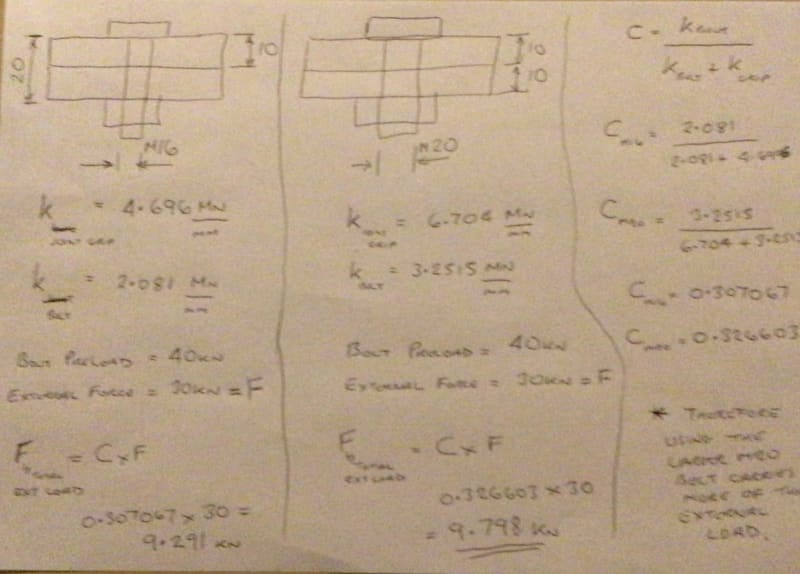Vah1D
Mechanical
- Jan 8, 2016
- 26
Hi everyone,
Hope it's not a stupid question!![[neutral] [neutral] [neutral]](/data/assets/smilies/neutral.gif)
Let's say you have bolted connection and the bolts are preloaded to the recommended value (let's say to 75% of proof load) and the joint is working properly under the external loads applied to joint.
Now let's swap the bolt with much larger one, and preload it exactly to the same amount of case#1; meaning that we turn the nut much less and using only, let's say for sake of this example, 40% of the proof load and that gives us identical amount of clamping load as to case#1. The external loads are exactly the same.
Am I right in thinking that both cases should perform the same? Is there any downside in going with case#2? (well other than the fact that I'm wasting money by using oversized bolts)
Thanks,
Vahid
Hope it's not a stupid question!
![[neutral] [neutral] [neutral]](/data/assets/smilies/neutral.gif)
Let's say you have bolted connection and the bolts are preloaded to the recommended value (let's say to 75% of proof load) and the joint is working properly under the external loads applied to joint.
Now let's swap the bolt with much larger one, and preload it exactly to the same amount of case#1; meaning that we turn the nut much less and using only, let's say for sake of this example, 40% of the proof load and that gives us identical amount of clamping load as to case#1. The external loads are exactly the same.
Am I right in thinking that both cases should perform the same? Is there any downside in going with case#2? (well other than the fact that I'm wasting money by using oversized bolts)
Thanks,
Vahid

